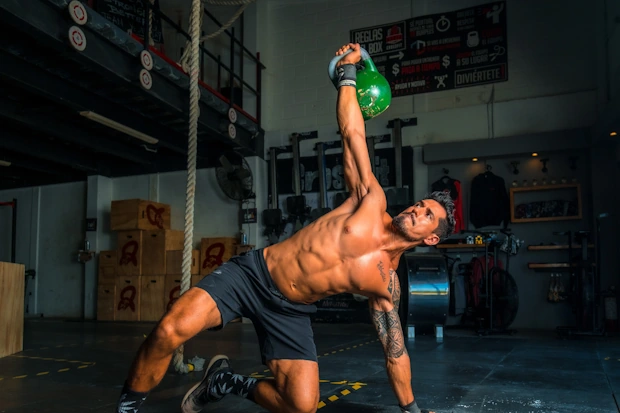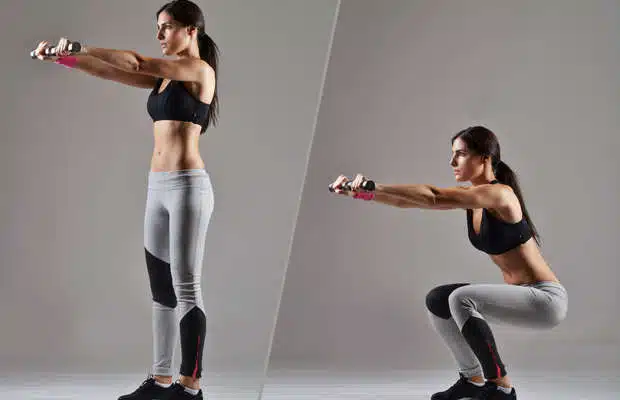
Understanding the science behind fat burning and muscle building is crucial for achieving optimal fitness and body composition. Fat burning and muscle building are interconnected processes that contribute to overall health and well-being.
Fat burning refers to the reduction of body fat percentage, while muscle building involves increasing muscle size and strength. By understanding the underlying principles and incorporating effective strategies, individuals can optimize their efforts to achieve their desired body composition.
Fat burning and muscle building are two goals that often go hand in hand. While it may seem contradictory to strive for both simultaneously, it is indeed possible to lose fat and gain muscle at the same time. This process is known as body recomposition. It focuses on reducing body fat while increasing lean muscle mass, resulting in a more toned and defined physique.
Body Recomposition

Body recomposition refers to the simultaneous process of losing fat and gaining muscle. It is a long-term endeavor that requires dedication, patience, and sustainable habits. When individuals embark on a body recomposition journey, their goal is not solely weight loss, but rather fat loss. The aim is to reduce body fat percentage while preserving or even increasing lean muscle mass.
To achieve body recomposition, a specific diet and training plan are necessary.
It is important to create a caloric deficit to promote fat loss, which means consuming fewer calories than the body needs for maintenance. This deficit can be achieved through a combination of calorie restriction and increased physical activity. However, it is essential to ensure that the caloric deficit is not too severe, as this can lead to muscle loss and nutrient deficiencies.
In addition to a caloric deficit, incorporating cardiovascular exercise and resistance training is crucial for body recomposition. Cardiovascular exercise, such as running or cycling, helps burn calories and promote fat burning. Resistance training, on the other hand, stimulates muscle growth and helps preserve lean muscle mass. By combining these two types of exercise, individuals can maximize their fat burning and muscle building potential.
Fat Burning Science
Fat burning is the process that leads to a reduction in body fat percentage. It occurs when the body is in a caloric deficit, meaning it is consuming fewer calories than it needs for maintenance. When the body is in a caloric deficit, it taps into its fat stores to obtain energy, leading to fat loss. To effectively burn fat, it is important to create a sustainable caloric deficit through a combination of calorie restriction and increased physical activity.
It is important to note that spot reduction, or the idea of targeting fat loss from specific areas of the body, is a common misconception. Fat loss occurs throughout the body as a whole, and it is not possible to selectively burn fat from a specific area. Therefore, a comprehensive approach that includes overall fat loss is necessary to achieve the desired body composition.
Effective Exercises for Fat Burning

Several exercises are effective for fat burning.
Running, cycling, and HIIT workouts are all excellent choices to elevate heart rate and boost calorie burn. These exercises can be done either outdoors or on cardio machines at the gym, making them accessible to individuals with different preferences and fitness levels.
For example, running is a popular exercise that can be done outdoors or on a treadmill. It is a high-impact cardiovascular exercise that engages multiple muscles in the lower body, including the quadriceps, hamstrings, and calves. Running at a moderate to high intensity can significantly increase calorie expenditure and promote fat burning.
In addition to cardiovascular exercises, resistance training should not be overlooked when it comes to fat burning. Resistance training helps preserve muscle mass while promoting fat loss. As muscle is metabolically active, having more muscle mass increases the body’s resting metabolic rate, leading to enhanced fat burning. Therefore, incorporating exercises such as weightlifting and bodyweight exercises can be beneficial for overall fat burning.
For instance, resistance exercises like squats and deadlifts target the lower body muscles, including the quadriceps, hamstrings, and glutes. These compound exercises not only burn calories during the workout but also promote muscle growth and increase the body’s metabolic rate, leading to continuous fat burning even after the workout is over.
Muscle Building Science

Muscle building, also known as muscle hypertrophy, is the process of increasing muscle size and strength. It occurs when the body is in a caloric surplus, meaning it is consuming more calories than it needs for maintenance. This surplus provides the necessary energy for muscle growth. Protein intake is crucial for muscle building, as it provides the building blocks necessary for muscle repair and growth.
To illustrate the muscle building process, let’s consider an example. Suppose an individual consumes 2,000 calories per day and engages in resistance training to stimulate muscle growth. By consuming a caloric surplus, such as 2,200 calories, the body has the extra energy and nutrients needed for muscle repair and growth. When combined with progressive overload in resistance training, which involves gradually increasing the intensity or resistance of exercises, muscle fibers are broken down and rebuilt to be stronger and bigger.
Protein intake plays a vital role in muscle building. It provides the essential amino acids necessary for muscle protein synthesis, the process by which muscles repair and grow. Consuming an adequate amount of protein, ideally around 0.8-1 gram per pound of body weight per day, can support muscle building efforts. Protein-rich foods such as lean meats, poultry, fish, eggs, dairy products, and plant-based sources like legumes and tofu should be incorporated into the diet.
Effective Exercises for Muscle Building

Weightlifting, squats, deadlifts, and other resistance exercises are highly effective for muscle building. These exercises target specific muscle groups and promote muscle growth through the principle of progressive overload. Compound exercises, which involve multiple muscle groups, are particularly beneficial for overall muscle development.
For example, the bench press is a compound exercise that targets the muscles of the upper body, including the chest, shoulders, and triceps. By progressively increasing the weight lifted during the bench press, individuals can stimulate muscle growth in these areas.
Similarly, the shoulder press targets the deltoid muscles and can be performed with dumbbells or a barbell. By gradually increasing the weight and challenging these muscles, individuals can build strength and size in these areas.
It is important to note that muscle building is a gradual process that requires consistency and progressive overload. Consistently challenging the muscles through resistance training and providing adequate rest and nutrition is key to promoting muscle growth.
It is also important to vary exercises and target different muscle groups to ensure balanced development.
Nutrition for Fat Burning and Muscle Building

A balanced diet plays a vital role in both fat burning and muscle building.
It is important to consume adequate protein to support muscle growth and repair. Protein-rich foods such as lean meats, poultry, fish, eggs, dairy products, and plant-based sources like legumes and tofu should be incorporated into the diet. Aim for a protein intake of around 0.8-1 gram per pound of body weight per day.
Carbohydrates provide energy for workouts and should be managed appropriately to meet individual needs. Complex carbohydrates such as whole grains, fruits, and vegetables are preferred over simple carbohydrates like processed foods and sugary drinks.
Healthy fats are also essential for overall health and hormone production. Sources of healthy fats include avocados, nuts, seeds, and olive oil.
To optimize fat burning and muscle building, it is important to manage calorie intake based on individual goals and activity levels. Consuming a caloric deficit is necessary for fat loss, while a caloric surplus is needed for muscle gain.
Calorie cycling is a strategy that involves modifying calorie intake based on activity levels. The goal of calorie cycling is to fuel muscle repair on weight training days and promote fat burning on cardio and rest days. This strategy can enhance both fat burning and muscle building efforts.
Debunking Misconceptions and Myths
There are several common misconceptions about fat burning and muscle building that need to be addressed.
One misconception is the belief in spot reduction, the idea that you can target fat loss from specific areas of the body. In reality, fat loss occurs throughout the body as a whole. Therefore, focusing on overall fat loss through a combination of calorie restriction and increased physical activity is necessary to achieve the desired body composition.
Another myth is the fear that women will bulk up from weightlifting. Women have lower testosterone levels compared to men, making it difficult to achieve significant muscle mass without specific training and dietary protocols.
Instead, weightlifting can help women develop lean muscle mass, enhance strength, and improve body composition. It is important to focus on overall health and fitness rather than solely on appearance.
Tips for Optimizing Fat Burning and Muscle Building

Consistency and adherence to a structured workout and nutrition plan are key for optimizing fat burning and muscle building results. It is important to prioritize rest and recovery to avoid overtraining and support muscle growth. Getting an adequate amount of sleep, managing stress levels, and incorporating active recovery days into the training routine can all contribute to optimal results.
Setting realistic goals, tracking progress, and making adjustments as needed are essential for long-term success. It is important to remember that fat burning and muscle building are gradual processes that require patience and persistence.
Celebrate small victories along the way and focus on overall health and well-being rather than short-term results.
For example, setting specific goals such as losing 1-2 pounds of fat per week or increasing strength in specific exercises can provide a sense of direction and motivation.
Tracking progress through measurements, photos, or workout logs can help identify patterns and make adjustments as needed. It is also important to listen to the body and prioritize rest and recovery to avoid injuries and promote muscle growth.
Conclusion
Understanding the science behind fat burning and muscle building is essential for achieving desired fitness goals. By following a balanced diet, incorporating effective exercises, and dispelling common misconceptions, individuals can optimize their fat burning and muscle building efforts.
With dedication and persistence, anyone can achieve their desired body composition and overall fitness.
Pingback: Best Cardio Workouts for Fat Burning - Burn Fat Simple Way